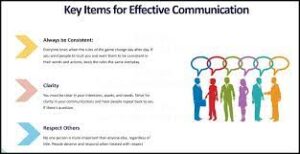Our mission to help you navigate the new normal is fueled by subscribers. To enjoy unlimited access to our journalism, subscribe today.
It appears Tesla’s long-awaited Battery Day wasn’t enough to recharge investors’ love for the stock—but some analysts are more bullish than ever.
Following the presentation on Tuesday evening, during which the Elon Musk-led company unveiled battery construction innovations, factory details, and future cheaper models, Tesla’s stock slumped after hours and is trading down over 6% in Wednesday morning trading. But that hasn’t come as a surprise to some analysts.
“Given Tesla’s stock incredible run up, we were skeptical that its long-awaited Sept. 22 Battery Day event would meet market expectations and the stock fell about 7% in afterhours trading,” Morningstar’s David Whiston wrote in a note Wednesday. Wedbush’s Dan Ives tells Fortune that given all the hype, “it was almost possible for them to announce a string of things that would keep the stock higher after the event.”
But Ives boils down investor dismay to one catalyst: “They didn’t announce a million mile battery, … where there was high anticipation they would announce that,” says Ives. “I can tell you from investor feedback, … that speaks to why the stock is down.” (The one million mile battery, teased by Tesla, would allow batteries to be recharged more than current models.)
In Whiston’s view, “the stock has nothing left for the near term,” as the manufacturing innovations detailed in Tesla’s presentation are “a multiyear story and I think there are some investors disappointed by that. That can happen when a stock zooms upward for no reason for months, all of a sudden the rocket runs out of fuel,” Whiston tells Fortune via email.
But Ives is much less deterred: The negative “knee-jerk” reaction to the stock is an “overreaction,” he argues. And there’s plenty to be optimistic about in Tesla’s presentation.
For Ives, the “headline” is Musk “laying the groundwork” for a 50% reduction in battery costs. “If they’re able to execute on that, which we believe they will, the story changes from a profitability perspective,” he says. It’s that cost reduction announcement coupled with the company’s introduction of a new battery cell, the 4680 cell, that is a “potential paradigm changer,” Ives suggests, and could help the electric vehicle maker continue to achieve profitability and gain market share.
Meanwhile, Morningstar’s Whiston “liked what we heard … and new product, such as Plaid Mode for the Model S due in late 2021 and a $25,000 vehicle in about three years, bring opportunities for more volume,” he wrote.
From that perspective, those like Ives view Wednesday’s sell off as a buying opportunity for long-term investors, even as the stock has faced a tough September. This month, Tesla shares have taken a beating following its stock split and failure to join the S&P 500 index. The stock is down over 10% since Sept. 1.
But Ives argues “it’s very easy to get into the noise and the emotional bull/bear story. At the end of the day, if they’re able to execute on the cost side for batteries, everything else is going to come: profitability, S&P 500 inclusion, more market share, and ultimately that trajectory to what could be profitability that’s 5x, 10x from where it is today.”
More must-read finance coverage from Fortune:
- Investors are pulling money out of U.S. equities and betting on Europe. Is it time to follow their lead?
- Feds’ “stablecoin” letter may boost crypto ambitions of Facebook, Square
- From bailout debacle to global dominance: Inside the turnaround at UBS
- The world’s biggest hedge fund is working from tents in the forest during the COVID pandemic
- One pandemic, two recoveries: New Yorkers are three times more likely to be jobless than Nebraskans




